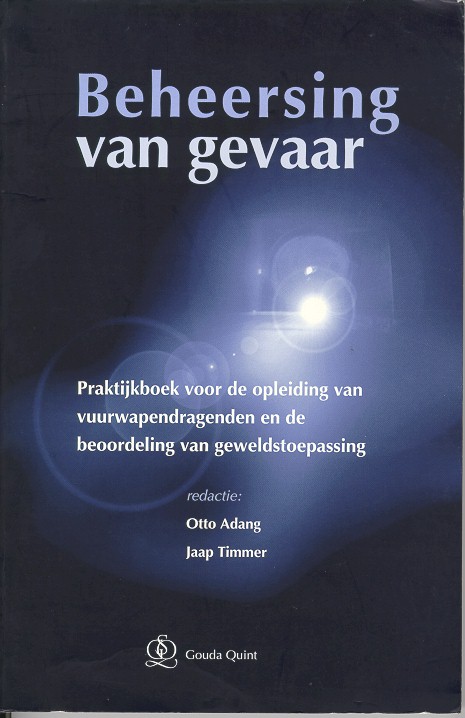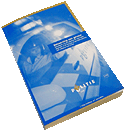The use-of-force training of police officers usually focuses on the correct use of different use-of-force options. However, analyses of use-of-force incidents and incidents where officers got hurt, indicates that, in many cases, officers bring themselves into a situation where eventually, use of force is the only option left to them. Often, situations can be managed in another, less violent way. To be able to achieve this, the focus in the training of officers should shift from the proper use of fire-arms, batons, etc, to the proper management of potentially dangerous situations. A changed training requires suitable didactic material. The book (in Dutch) "Managing dangerous situations" (Beheersing van gevaar) by Otto Adang & Jaap Timmer [new revised edition, 2005], consists of the following:
- a chapter in which the views outlined above are presented more extensively
- a chapter summarizing the results of the research on police use of fire-arms in the Netherlands, 1978 -2000
- a chapter by James Fyfe: "The myth of the split-second decision"
- a chapter devoted to characteristics of potentially dangerous situations
- a chapter indicating how to make best use of the book
- addenda, containing legislation, basic tactic and organisational principles
The main body consists of a presentation of forty selected incidents in which police-officers used their fire-arms. The incidents are presented in parts, questions and comments are added. The way in which superiors and public
prosecutors judged police actions are referred to the addenda.
The book is intended to be used in the following manner:
- after reading the introductory part of a selected case, students are asked to write down (individually and without time pressure) answers to five basic questions:
- after discussing the answers groupwise, students are asked to read the next part of the selected case and to write down answers to the same basic questions and so on, until all parts of the case have been worked through. Most cases consist of four parts, some consist of up to eight parts.
- in the next step, students will be asked to act out their own approach. They will gradually be confronted with (slide or video pictures of) situations based on the cases. The instructor is expected to give special attention to perception, movement, etc.
- only at the last stage will students be asked to act in a real-time scenario, preferably a role play.
Throughout, the instructor is required to focus on what students can do, rather than presenting them with tasks that are
too difficult for them.

